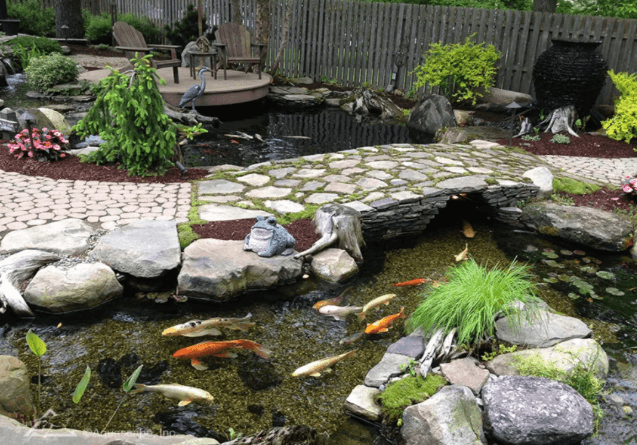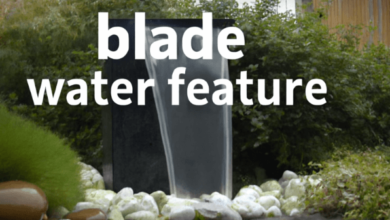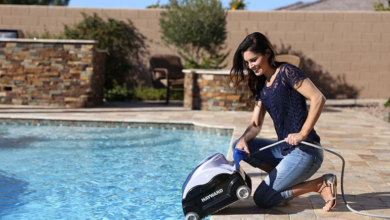Discover the Secret to a Cleaner Pond That Thrives Naturally

A clean, serene pond isn’t just a luxury, it’s a sign of a thriving ecosystem. Whether nestled in your backyard or designed as a showcase garden feature, ponds bring peace, life, and natural beauty. But without attention and care, that picture-perfect water feature can quickly slip into murky trouble. Wondering how to create a cleaner pond that stays beautiful year-round? Let’s explore how simple choices and mindful actions lead to a clear, healthy pond.
The Real Perks of Keeping a Pond Clean
A cleaner pond doesn’t just look good—it feels good. When the water is clear, fish thrive, plants bloom, and bad smells stay away. A clean pond is less about perfection and more about balance. Here’s what happens when things are working the right way:
- Fish enjoy steady oxygen levels
- Algae becomes manageable, not overwhelming
- Water smells fresh, not foul
- Beneficial bacteria flourish and keep the ecosystem stable
- Long-term maintenance becomes easier and less expensive
Clear water signals that everything under the surface is in harmony. And that’s something worth working toward.
Building a Strong Foundation Starts with the Right Tools
Think of your pond like a home. Without solid systems in place, things fall apart. To build the foundation for a cleaner pond, focus on these essential elements.
Rely on a Trustworthy Filtration Setup
Filtration is your pond’s silent guardian. It clears away particles, processes waste, and keeps toxins in check. Good filters do two things:
- Mechanical filtration removes solid debris like leaves and fish waste
- Biological filtration nurtures bacteria that process harmful substances
Systems such as EazyPod, Evolution Aqua, or drum filters offer dependable performance and are especially helpful for koi or heavily stocked ponds.
Skimmers: Your First Line of Defense
Floating leaves, fallen petals, and surface gunk all contribute to pond sludge over time. A surface skimmer collects these before they sink. This simple addition keeps water clearer and reduces the burden on other equipment.
Let Nature Lend a Hand
You don’t have to do everything alone. A cleaner pond thrives when you let nature take part.
Welcome Beneficial Microorganisms
Adding natural bacteria treatments to your pond helps break down organic matter and sludge. These tiny helpers reduce nutrient buildup, leading to clearer water and fewer algae issues.
Don’t Fear a Bit of Green Just Keep It in Check
Algae are a normal part of any aquatic system. The goal isn’t to eliminate it completely but to stop it from taking over. Here’s how to control algae:
- Install a UV clarifier to break down floating algae particles
- Maintain a reasonable fish-to-water ratio
- Try natural algae deterrents like barley straw or liquid extracts
Algae outbreaks often signal a deeper imbalance—too much waste, sunlight, or nutrients—so staying ahead of them keeps your pond healthy.
Regular Attention Makes a Big Difference
Like any living system, your pond needs care. But it doesn’t have to be overwhelming.
Clean Equipment Keeps Everything Flowing
Check your pumps, filters, and UV clarifiers routinely. Wash out sponge filters, remove blockages, and replace worn parts. This not only improves efficiency but also prolongs equipment life.
Keep Fish Populations Under Control
Too many fish create too much waste. And no amount of filtration can keep up if the pond is overstocked. Stick to the general guideline: one inch of fish for every 10 gallons of water. This gives your cleaner pond a chance to maintain balance without overload.
Plants: The Natural Purifiers
Plants do more than look beautiful—they’re your allies in water management. Here’s how:
- Floating plants like water hyacinth block excess sunlight
- Submerged plants such as hornwort oxygenate and filter water
- Marginal plants absorb nutrients that would otherwise feed algae
Combining different types creates a layered defense against imbalance. They shade fish, slow evaporation, and naturally clean the water.
Seasonal Shifts Call for Smart Adjustments
Each season affects your pond differently. Ignoring these changes can undo months of hard work.
Spring and Fall: The Deep Clean Zones
During these transitional months, debris builds up fast. Use a pond vacuum to remove sludge without harming fish or plants. Trim back overgrown vegetation and remove dead leaves. It’s also the perfect time to inspect and refresh your filtration system before seasonal extremes hit.
Winter and Summer: Gentle Monitoring
In winter, reduce feeding and watch for ice. In summer, provide shade and aeration to prevent oxygen dips. These small seasonal changes support long-term cleanliness.
Simple Habits Lead to a Cleaner Pond Over Time
You don’t need to overhaul your pond every week. Focus on habits that keep things balanced naturally:
- Scoop out floating leaves daily or as needed
- Add beneficial bacteria monthly
- Trim dead plant material weekly
- Inspect filters and skimmers every two weeks
- Perform deep cleaning twice a year
These small steps, done consistently, are the real secret to a clear and cleaner pond.
Clearing Up Confusion
Can I just use chemicals to clean my pond faster?
Quick fixes might improve appearance short-term, but they can damage plants, kill fish, and harm the ecosystem. Stick with natural methods for lasting results.
Do I need professional help to clean my pond?
Not always. Most tasks—like vacuuming sludge, adjusting filters, or adding bacteria—can be done on your own. For complex plumbing or extreme algae issues, calling a pond pro might help.
How often should I clean the pond completely?
You don’t need to drain your pond unless there’s a major issue. With regular maintenance and seasonal cleaning, full water changes can often be avoided entirely.
Can fish survive without filtration?
In natural, low-stock ponds with lots of plants, it’s possible. But in most garden ponds—especially with koi—filtration is essential to avoid ammonia buildup and oxygen crashes.
Why is my pond cloudy even though it looks clean?
Cloudiness might come from excess nutrients, disturbed silt, or microscopic algae. Test your water, adjust feeding, and boost biological filtration to restore clarity.
The Beauty of a Balanced Pond
A cleaner pond isn’t just a result—it’s an ongoing relationship. When water is clear, fish swim confidently, and plants wave gently in the current, you know you’ve created something special. The steps you take—skimming, planting, filtering, observing—all build toward an ecosystem that rewards you with beauty and calm.
Whether you’re just starting out or refining a mature water feature, remember this: every choice you make moves your pond closer to harmony. And in that balance, the water tells its own story—clean, calm, and completely alive.




